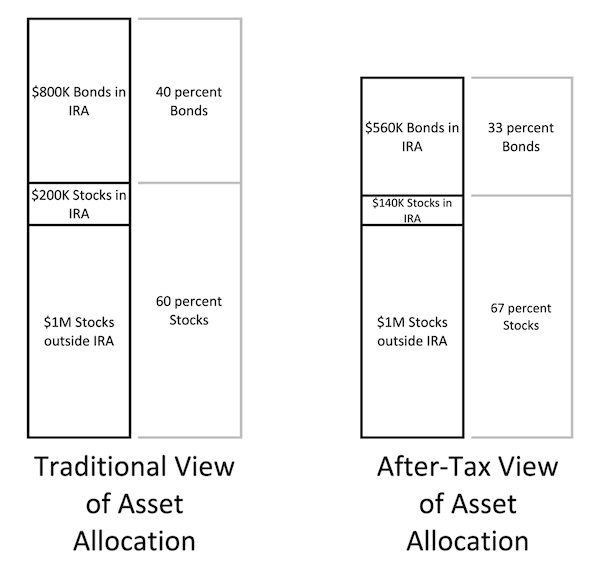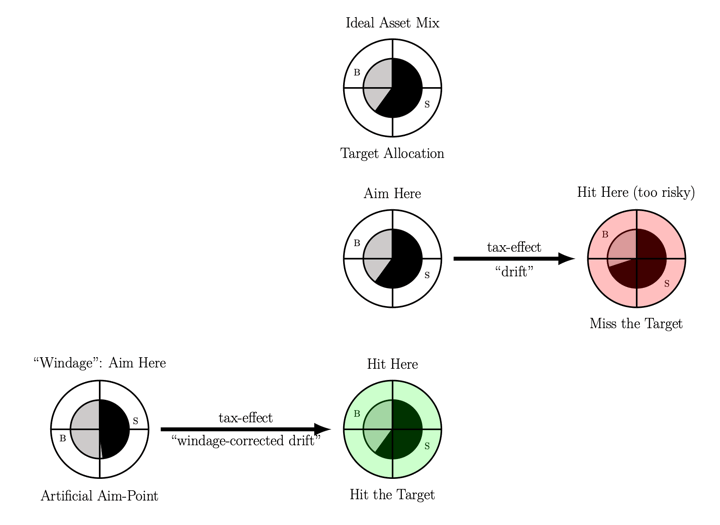
When you add up your assets and liabilities to come up with your net worth, do you adjust the numbers for taxes? The amounts in your Traditional 401ks and IRAs may be shrunk significantly upon eventual withdrawal due to income taxes. You never paid taxes on them upfront, so it makes sense that they are a bit “inflated” during your accumulation phase.
The academic paper Kentucky Windage for Asset Allocation by Jennings and Payne suggests that you should adjust your target asset allocation now in order to hit you goal more accurately in the end. This chart from the paper illustrates the potential effect of taxes on asset allocation:

“Kentucky windage” refers to the practice in shooting to aim upwind of the target in order to compensate for the effect of windage. For example, if the wind is blowing to the right, you’d aim a little left of the target.
For example, if your target is 60% stocks and 40% bonds but you have a lot of bonds being held in your traditional 401k, you should realize that will end up as 70/30 stocks/bonds after-taxes. Therefore, you should “aim” for 50/50 stocks/bonds, in order to truly end up at 60/40. Here’s another illustration from the paper:

Adjusting for taxes sounds like the proper thing to do, but I also found that their example of a 10% shift to be pretty extreme. The actual result is highly dependent on your specific asset class locations and tax brackets. Notice that the chart above assumed no tax hit on a “Stocks outside IRA” taxable account, but in reality there may be a lot of unrealized capital gains. For my own situation, I would estimate less than 5% in after-tax “drift”. Sure, I might still try to correct for that, but under 5% starts getting into noise territory. My target asset allocation may change independently over time for other reasons, or it might just change that much due to a stock market drop (or rise). But if your portfolio is heavily in pre-tax accounts, it’s something to consider.
Photo by Balint Mendlik on Unsplash
 The Best Credit Card Bonus Offers – 2025
The Best Credit Card Bonus Offers – 2025 Big List of Free Stocks from Brokerage Apps
Big List of Free Stocks from Brokerage Apps Best Interest Rates on Cash - 2025
Best Interest Rates on Cash - 2025 Free Credit Scores x 3 + Free Credit Monitoring
Free Credit Scores x 3 + Free Credit Monitoring Best No Fee 0% APR Balance Transfer Offers
Best No Fee 0% APR Balance Transfer Offers Little-Known Cellular Data Plans That Can Save Big Money
Little-Known Cellular Data Plans That Can Save Big Money How To Haggle Your Cable or Direct TV Bill
How To Haggle Your Cable or Direct TV Bill Big List of Free Consumer Data Reports (Credit, Rent, Work)
Big List of Free Consumer Data Reports (Credit, Rent, Work)
Speak Your Mind